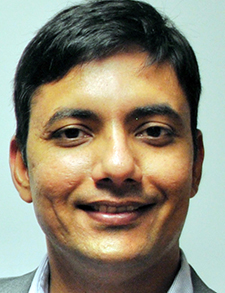 The world of 2024 isn’t your grandfather’s health information technology (IT). Heck, it’s not even the world that existed when the first iPhone debuted in 2007.
The world of 2024 isn’t your grandfather’s health information technology (IT). Heck, it’s not even the world that existed when the first iPhone debuted in 2007.
The breakneck pace of health IT in the past decade-plus—from electronic health records (EHR) to telemedicine to ChatGPT and beyond—makes keeping abreast of the latest best practices a challenge.
Say hello to the Health IT Special Interest Group at SHM. Launched in 2018 as one of the original SHM committees to transition to a SIG, the group has 564 members focused on navigating the ever-evolving landscape.

Dr. Patel
“This is day-to-day work that hospitalists come across, starting from the EHR or the data or clinical decision support,” said SIG chair Mihir Patel, MD, MPH, FACP, CLHM, SFHM. “Whichever way you look, this is important. This SIG is providing a platform for hospital medicine professionals to share knowledge and best practices.”
Dr. Patel is the medical director of virtual medicine at Ballad Health in eastern Tennessee, as well as chair of the health system’s inpatient clinical informatics council. He’s also still a practicing hospitalist. Said another way, he sits at the nexus of doing the daily work that the technology aims to make easier.
Dr. Patel says the SIG provides a forum to figure out what works best—from the people who figured out what works best.
“We come across a lot of different scenarios that one hospitalist is doing the same thing using this workflow, which another hospitalist is doing the same thing using a different workflow,” he said. “So, we can understand who is more efficient, and the differences there. That basically sparks this conversation of ‘What can we do apart from just lobbying our administration to get the better EHR? What are the common practices that we can adopt, hospital medicine-wide, that can at least help the efficiency and decrease the burnout of the hospitalists?’”
Dr. Patel notes that it’s important to focus not just on having or implementing technology, but to work them intuitively into daily workflows. “How you can use some of the commonsense methodology to improve the efficiency of patient care and quality,” he said.
That challenge has become more paramount in the years since the COVID-19 pandemic. Rising rates of burnout are a major concern for hospitalists and health care systems nationally, despite technology like virtual medicine that ostensibly exists to reduce burdens and pressures.
“The rising burnout among health care professionals is due not only to the increased patient load but also because this increase comes with a variation in workflows and resources, requiring them to manage different digital tools, including the various electronic health record systems,” Dr. Patel said. “Basically, how you can survive as a health care professional is a lot dependent on how you are informed, and using your time and resources, and that’s the digital health resources, including the EHR, in the right way.”
Put another way, Dr. Patel estimates that maybe more than 40% of a hospitalist’s day—as well as other practitioners—is spent in front of a computer. That number only goes up for hospitalists who are providing telemedicine services outside their geographic area.
“And if you don’t know how to use that technology properly, I think that patient care is not going to burn you out, but how to get into the data, how to access data, how to manage the data, and how to get the right care out of that data” will, he said. “I would say it is most important to understand how to tackle that through all these different silos of the EHRs or our daily digital tools.”
Dr. Patel points to interoperability issues, user interfaces, and training modules as potential hurdles to the most efficient use of technology.
“For the past two decades, patient care methods have evolved significantly from traditional pen and paper approaches to more advanced systems,” he said. “Today, if these modern systems fail, it becomes nearly impossible to provide patient care effectively. Without functioning systems, medical practitioners can’t prescribe medications, and even if they manage to do so, nurses struggle to access these prescriptions from their digital medication dispensing systems. Furthermore, discharging a patient becomes a challenge, as it typically requires digital orders and prescriptions. This shift to digital formats has become integral to contemporary health care practices.”
Dr. Patel says the SIG’s webinars, relationship networks, events, and white papers offer opportunities for hospitalists at any technological level to participate.
“It’s not just about the technology, how it helps the daily work life,” he said. “The key factor lies in how you adopt technology, comprehend its functions, and correctly implement it in alignment with the workflow. This aspect is crucial. While new technologies will continually emerge, their improper implementation can result in increased burnout instead of being beneficial.”
Richard Quinn is a freelance writer in New Jersey.